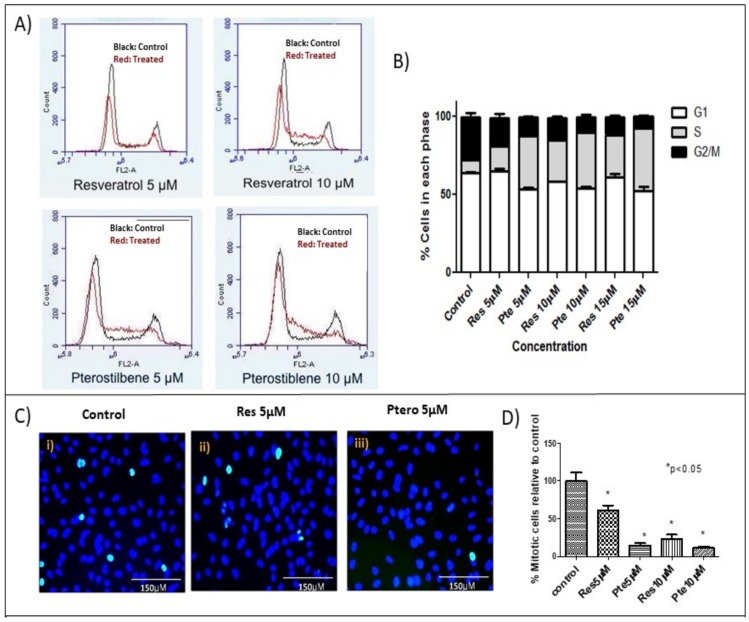Figure 3.
S-phase arrest in HeLa cells treated with low concentrations of resveratrol and pterostilbene: (A) Flow-cytometric evaluation of HeLa cells untreated or treated with sub-lethal doses of resveratrol (Res) and pterostilbene (Pte) for 18 h. Treated cells exhibited S-phase arrest and a subsequent decrease in the number of cells in G2/M. Pterostilbene was a more potent compound than resveratrol, showing a capacity to arrest cells at the S-phase at concentrations as low as 5 µM. (B) Graphical representation of the dose-dependent cell cycle effects induced by resveratrol and pterostilbene at three different concentrations (5 µM, 10 µM, and 15 µM). (B) The graph represents data from triplicate sample experiments normalized to the control (mean % cells in each phase ± S.E.M.) (C) Immunofluorescent images of HeLa cells probed for the M-phase marker phospho-histone-H3 (serine10). HeLa cells were untreated or treated with 5 µM and 10 µM of resveratrol or pterostilbene. Immunofluorescent images display a decrease of histone-H3 in cells treated with both the compounds, the effects at 5 µM of pterostilbene is much greater than those of resveratrol (at 5 µM). (D) Graphical representation of the percent of mitotic cells calculated from immunofluorescent images reveal that resveratrol and to a greater extent pterostilbene are effective in decreasing the number of mitotic HeLa cells. The graph represents data from experiments obtained from triplicate samples normalized to the control (mean % mitotic cells ± S.E.M.;* p < 0.05).

